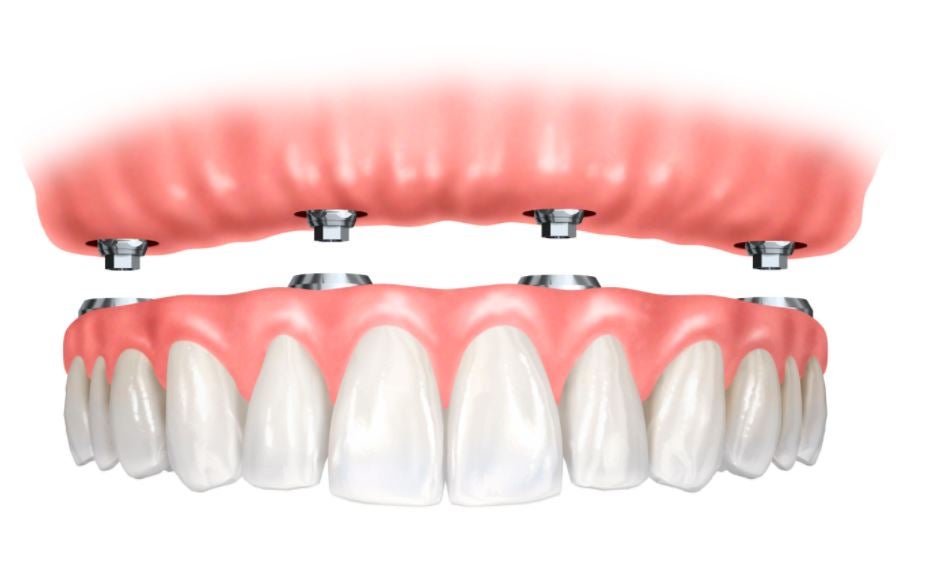Getting My Dental Sense To Work
Getting My Dental Sense To Work
Blog Article
The Definitive Guide to Dental Sense
Table of ContentsGet This Report on Dental SenseAbout Dental SenseThe Ultimate Guide To Dental SenseGetting My Dental Sense To Work
are medical tools surgically implanted right into the jaw to restore an individual's capacity to eat or their look. They offer assistance for artificial (phony) teeth, such as crowns, bridges, or dentures. When a tooth is lost due to injury or illness, an individual can experience problems such as quick bone loss, faulty speech, or changes to chewing patterns that lead to discomfort.Oral dental implant systems include an oral implant body and dental implant joint and may additionally consist of an abutment addiction screw. Kids dental. The oral implant body is operatively put in the jawbone in location of the tooth's root. The oral implant joint is usually connected to the dental implant body by the joint fixation screw and expands via periodontals right into the mouth to sustain the affixed man-made teeth
(https://www.mixcloud.com/dentalsense1/)Structure of The Oral Implant System picking oral implants, talk with your oral copyright concerning the prospective advantages and risks, and whether you are a prospect for the treatment. Things to take into consideration: Your total health and wellness is an essential consider establishing whether you are a great prospect for dental implants, exactly how long it will certainly require to recover, and for how long the dental implant might remain in place.
Smoking may affect the recovery process and lower the lasting success of the implant. The recovery process for the dental implant body might take several months or longer, throughout which time you generally have a short-lived joint instead of the tooth. the oral implant treatment: Very carefully follow the dental health instructions offered to you by your dental service provider.
The Best Guide To Dental Sense
Implant failure can cause the demand for an additional operation to repair or change the dental implant system. Brings back the ability to chew Brings back cosmetic appearance Helps keep the jawbone from reducing as a result of bone loss Protects the health and wellness of the surrounding bone and periodontals Assists keep nearby (nearby) teeth steady Improves lifestyle Damages to bordering natural teeth during dental implant positioning Injury to the surrounding cells throughout surgical procedure, such as sinus perforation Injury during surgical procedure (for example, fracture of bordering jawbone) Inadequate function, such as seeming like the teeth do not attack with each other usually A sensation that the tooth hangs or twisting in place resulting from a joint screw loosening up Implant body failure (looseness of the implant body) due to systemic infection, which might be more most likely in patients with uncontrolled diabetes mellitus because of regional infection in bone and gums supporting the implant body because of delayed healing, which might be more likely in patients that smoke Difficulty cleaning up the gum tissues around the dental implant, resulting in poor oral hygiene Neglected gum condition Post-surgical numbness because of nerve impingement or damages Always notify healthcare providers and imaging specialists that you have oral implants prior to any magnetic vibration imaging (MRI) or x-ray procedures.
FDA is not familiar with any negative events reported for MRI or x-ray procedures with dental implants. Oral implants systems are normally made of products that comply with global agreement criteria of the International Organization for Standardization (ISO) or ASTM International. These criteria have details of what makes a risk-free material.

An oral implant is a framework that replaces a missing tooth. With screw-like gadgets, the surgeon inserts an implant right into the jawbone, and it acts as an anchor for a fabricated tooth, called a crown.
The Dental Sense Ideas
Some individuals are not qualified for dental implant surgical procedure. It is for oral cosmetic surgeons to operate individuals with: acute illnessuncontrollable metabolic diseasebone or soft tissue disease or infectionIf these problems are settled, an individual can have the surgery. In, dental doctors avoid operating individuals with: If individuals with any of the above undergo dental implant surgery, there is a greater risk of the implant falling short.

Oral implant surgical procedure is a customized procedure. It's not the same for everybody. The complying with offers a basic overview of what you can anticipate your dental expert, oral surgeon, periodontist or prosthodontist to do: Position the dental implant surgically. Offer you time to recover. Connect the article and last crown, bridge or denture.
Next off, your cosmetic surgeon will carefully position the dental implant right into your jaw. If your implant is near the front of your mouth, your dental expert will make a temporary tooth for you to wear until you recover.
The smart Trick of Dental Sense That Nobody is Discussing
Throughout the healing phase, your jawbone ought to fuse to the dental implant. This process can take anywhere from three to nine months.
Once your implant heals, your dental practitioner can connect the joint (tiny adapter article) and your last reconstruction (crown, bridge or denture). This normally takes regarding one hour to complete find this and might need a 2nd small surgical treatment. You shouldn't really feel any discomfort throughout your oral implant procedure due to the fact that your copyright will certainly use medication to numb your gums.
Report this page